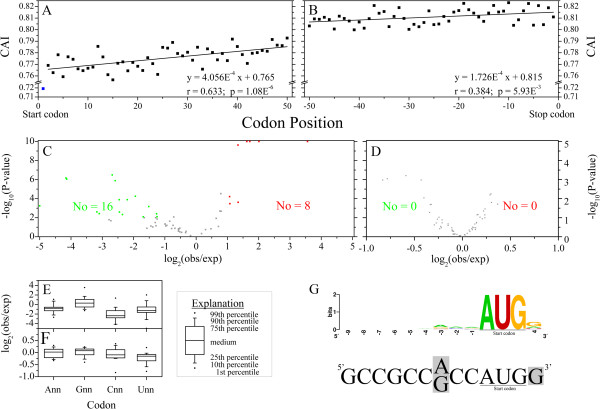Figure 8.

Overview of codon usage and the preferred and avoided codons following AUG in Chinese bayberry. A) Correlation between CAI and codon positions of the first 50 codons following the start codon on a scatter diagram, with linear fitting of 2–50 codons. B) Correlation between CAI and codon positions of the last 50 codons before stop codons, on a scatter diagram, with linear fitting. C, D) The relationship between observed frequency and expected frequency of 61 codons following the start codon AUG (C) and non-start internal codon AUG (D). The red, green and gray spots represent the preferred codons (with P-value less than 0.01 and the ratio of observed value to expected value larger than 2, avoided codons (with P-value less than 0.01, and the ratio of observed value to expected value smaller than 0.5) and unbiased codon pairs, respectively. The lowest P-value was set as 1E-10. E, F) Distribution of the ratio of observed frequency to expected frequency in different types of codons following the start codon AUG (E) and non-start internal codon AUG (F). The X axis shows the types of codons, where n represent A, G, C or U. G) Comparisons of bayberry and Kozak consensus sequences of 13 nucleotides (n9AUGn) around the start codon AUG. The upper, colored part shows the consensus sequence of 13 nucleotides (n9AUGn) around the start codon AUG in Chinese bayberry. The lower part is the Kozak consensus sequence of 13 nucleotides (n9AUGn) around the start codon AUG, and the nucleotides with gray background indicate the key recognition sites.
